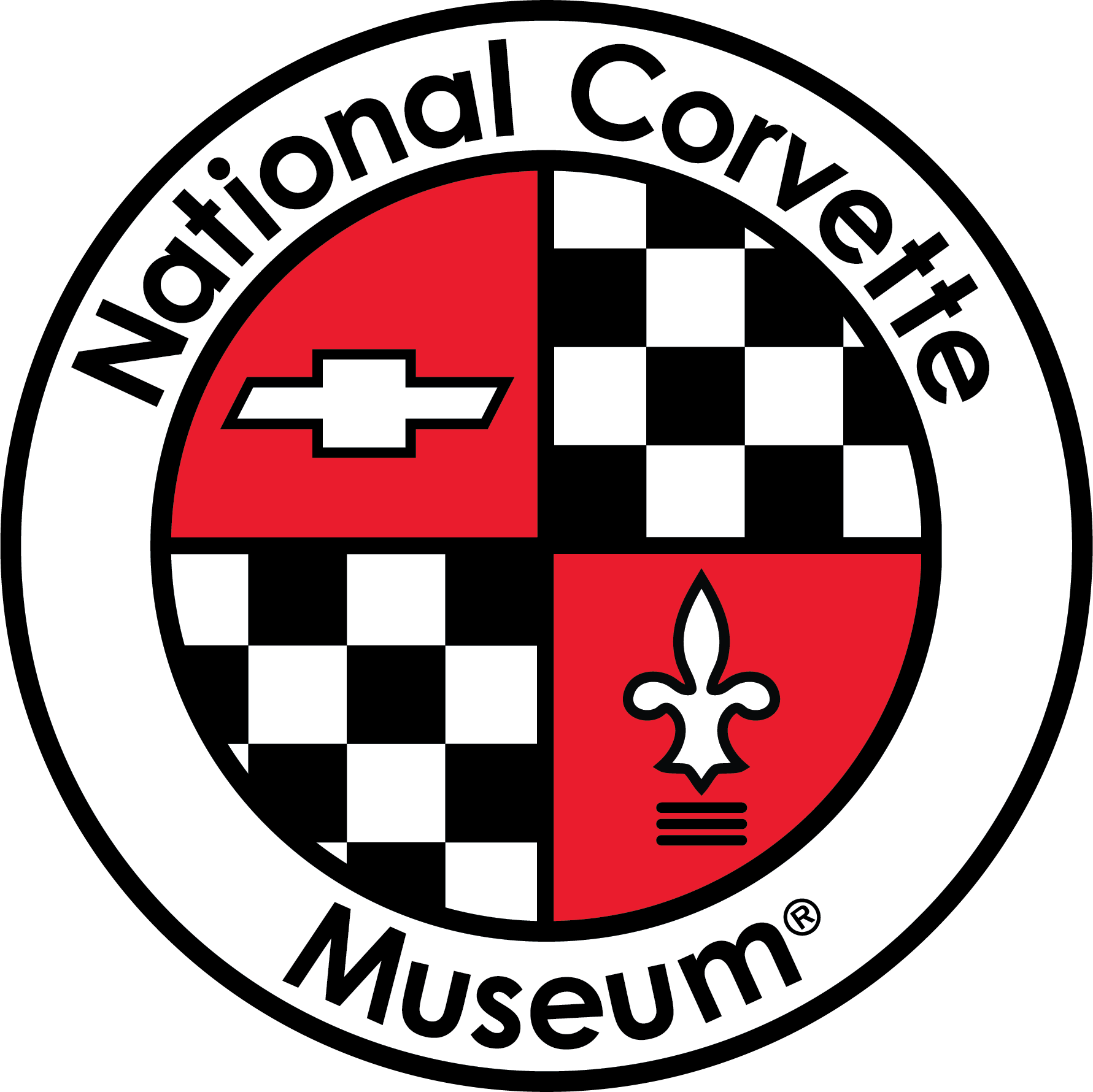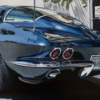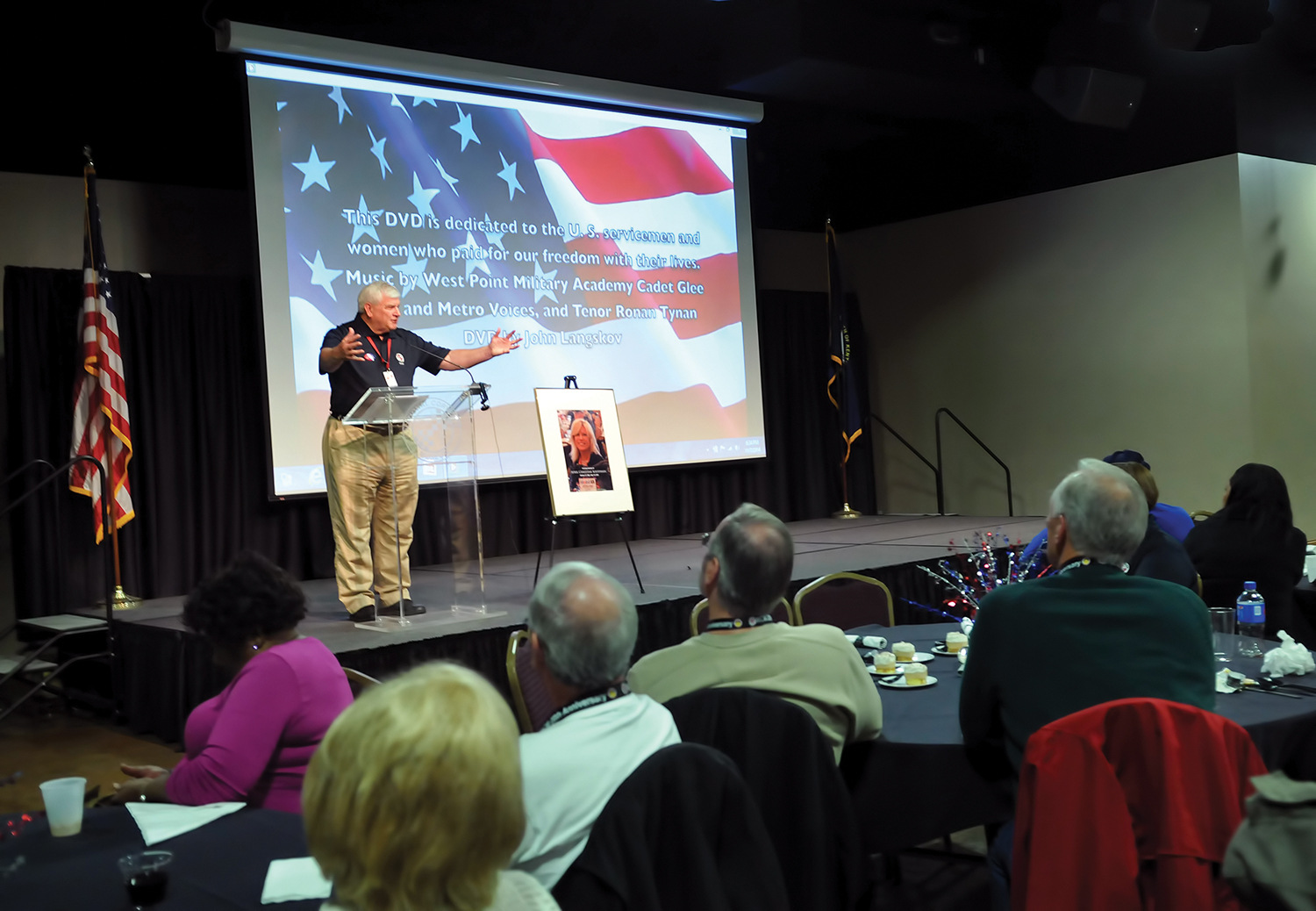
Wendell Strode, Museum Executive Director, addresses the Veterans attending the Museum’s annual Vets ‘n Vettes event.
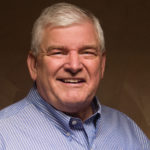
Wendell Strode, Museum Executive Director
Normally, when I go into Museum Executive Director Wendell Strode’s office, it’s just to find out how he’s doing or to get a quote from him for an article I’m working on. Today was different though. The familiar grin was still there as he invited me to close the door and sit down, but it was a fragile smile that seemed difficult for him to maintain. What we were about to talk about would be difficult. He was getting ready to take me through some of his memories of Vietnam.
Several weeks earlier, I had shared with him about a friend who had PTSD. He told me a little about his own experience with it, and how it hit him later in life. When I suggested that an article about it might do someone some good, he agreed without hesitation. What I didn’t know then was what I was really asking him to do.
After I turned on the recorder, he looked down, and would rarely make eye contact with me again until he had finished his story. His smile was gone as his mind took him back to Vietnam.
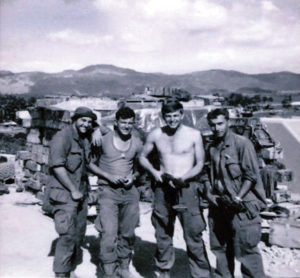
A shirtless Wendell in February 1969 with his Delta Company brothers. His best friend Jason Wright is on the far right.
He remembers his first day in the field, and how he was transported to his infantry platoon company via helicopter with a man who would become his best friend in Vietnam, Jason Wright.
When they touched down, Wendell got his first look at the horrors of war. A mortar round had landed amidst twenty soldiers not long before he arrived. Four were dead and many more were injured. Wendell remembers vividly how the wounded were loaded for evacuation. The Lieutenant refused to get on until the last man was on board. He died waiting.
Another man, a Native American named Two-Crow, sat up from his gurney as the chopper took off. He gave a “peace” sign. He would end up dying en route.
Wendell would be assigned to the Lieutenant’s foxhole as it was now vacant. He could smell and see the evidence of what had happened all around him, and wouldn’t sleep that night.
Sgt. “Skeeter” Lasa was Platoon Sergeant over the 3rd platoon. Wendell credits his survival to that man and his almost clairvoyant ability to anticipate enemy position. “I have no doubt in my mind that more people made it home because of Sgt. Lasa, than would have without him.”
Wendell recalls how they got shot at every day, and how it wasn’t long before he could tell where the bullets were going by the sound they made—whether they hit a tree, or the ground, or a person. Soldiers would begin to call for a medic before they could even see who was hit by that sound alone.
When word got around that Wendell had graduated from broadcasting school, he was given the job of radio/telephone operator. Along with the extra weight of that equipment, he also carried the responsibility of communicating with the other units. He recalls a time when they were in a heavy firefight, nearly out of ammunition, and he had to call in for support. He passed along the coordinates given to him, knowing that his platoon was close enough that they could suffer casualties as well. “I’ve been told that more men were saved than lost because of that call, but I still think about it often.”
At this point, Wendell pauses the story. I can’t tell if he is stopping to honor those who died, or if he is just trying to push beyond the memory.
He goes on to describe water coming from a mountain stream that was the cleanest most refreshing water he’d ever had, but also remembers having to drink water from the rice patties that was black and filled with leaches. He brings up the villages that had to be burned when they found enemy cache’s hidden in them, and the battles along the way. He recalls in vivid detail engaging the enemy himself and tells me that those memories always play back in slow motion.
On March 8th 1969, the platoons were split up to investigate movement in a particular area. While on route, Wendell received a call on the radio indicating that the other platoon had walked into an ambush and had already suffered fatalities and many more were wounded. The 3rd platoon responded, shedding their backpacks, setting out to give support.
The North Vietnamese had built a sophisticated tunnel system throughout this area, and along the way Wendell saw what looked like an entrance to one. As he approached it, he saw movement. At that moment, a signal was given by the enemy and a full regiment of NVA soldiers, probably 300 men, opened fire on the platoon. “They were close enough to throw grenades,” Wendell says. “We were greatly outnumbered.”
The Lieutenant in charge was killed in that first round of gunfire, so no one was giving direction. Another radio/telephone operator was wounded early in the fight, probably to cripple communications.
Wendell was targeted as well. He doesn’t remember getting shot. He only realized it when he tried to return fire and his arm wouldn’t work. He reached up and felt his shoulder, wet with blood.
He found what barely passed as cover with another soldier who was returning fire. With his good arm, he got on the radio to communicate with the gunships. Their plan was to spray the area with mini-guns from one helicopter, followed by another round from another, and then use rockets once they identified any strongholds. When the assault began the platoons were ordered to retreat. The plan was passed along the line as bullets and grenades continued to fly.
When the first gunship came in, Wendell turned to fall back with the others but fell flat to the ground instead. He had caught shrapnel from a grenade in his left leg. Unable to get out of the way in time he watched as the chopper came towards him shooting 6,000 rounds a minute. The spray of bullets came within 10 inches of hitting him.
“A guy by the name of Timmerman came back to get me. He was smaller than I was, yet he helped me until he couldn’t go any further.”
Wendell found the strength to keep going from there, and managed to make his way to an armored personnel carrier. From there he was transferred to the medevac chopper that would take him back to base.
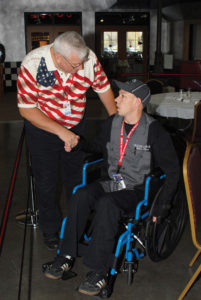
Wendell greets a Veteran at a Wounded Warriors banquet sponsored by Mobil 1.
He spent 2 ½ months healing in a hospital in Japan. This gave him some time to begin processing what had happened. Because he could type, they gave him a job in South Korea, working as the clerk typist. This gave him another 7 months to transition mentally from being a Vietnam War Infantryman to a regular soldier. By the time he got out he was able to integrate back into society and focus on his future.
Others were not so fortunate. “One day a supply helicopter would come in, call your name, and you’d be gone. Here a person went from being at war to being home with no adjustment period. He would be turned loose as if nothing had happened to him.”
When veterans did try to get help, often they were accused of trying to “work the system” and were left to find their own way to deal with PTSD, which wasn’t even acknowledged back then as a real problem.
“For some people, like myself, we were able to put it behind us for a while,” Wendell says. “I got along for several years without a major problem. Then a few years ago, I would have flashbacks that put me back in Vietnam—just as real as if it was happening.”
As this continued, Wendell’s wife, Jan, told the family doctor what was happening. He got Wendell to agree to treatment and encouraged him to enroll in the VA Healthcare Program where he received additional help through counseling.
Another good thing for him was meeting up with other veterans. “A few years back, the wife of a 1st platoon veteran saw that he was having PTSD issues, and organized a Delta Company reunion, thinking that it might help him. The level of anxiety that I had was so high when I got there, knowing I’d be with people I’d served with, but it turned out to be so therapeutic for me in the end.”
These reunions happen every other year, and at some point conversation always turns to PTSD. “There are some there who would not admit they are hurting. I understand that. There was a point when I thought, ‘I’m Wendell Strode. I’ve been President of a multi-million dollar bank, and I’m stronger than this.’ But I was no match at all for PTSD on my own. With medication and counseling though, I believe that fellow veterans with PTSD can have a better life. For the most part, I feel like the old Wendell before the flashbacks started. If you or a loved one suffer from PTSD, PLEASE get with the VA in your area and get help. Check with your U.S. Senator and Representative as some have offices set up specifically to help veterans.”
At this point in the interview, he finally looks up at me with as serious an expression as I’ve ever seen come from him. Having made it through another trip through his memories, he’s come out on the other side, ready to make the point that all of this was leading up to.
“I want my fellow veterans to know something. As someone who has been where you were and where you are, I encourage you to pleasekeep trying. Don’t give up.”
Download the complete article from America’s Sports Car Magazine
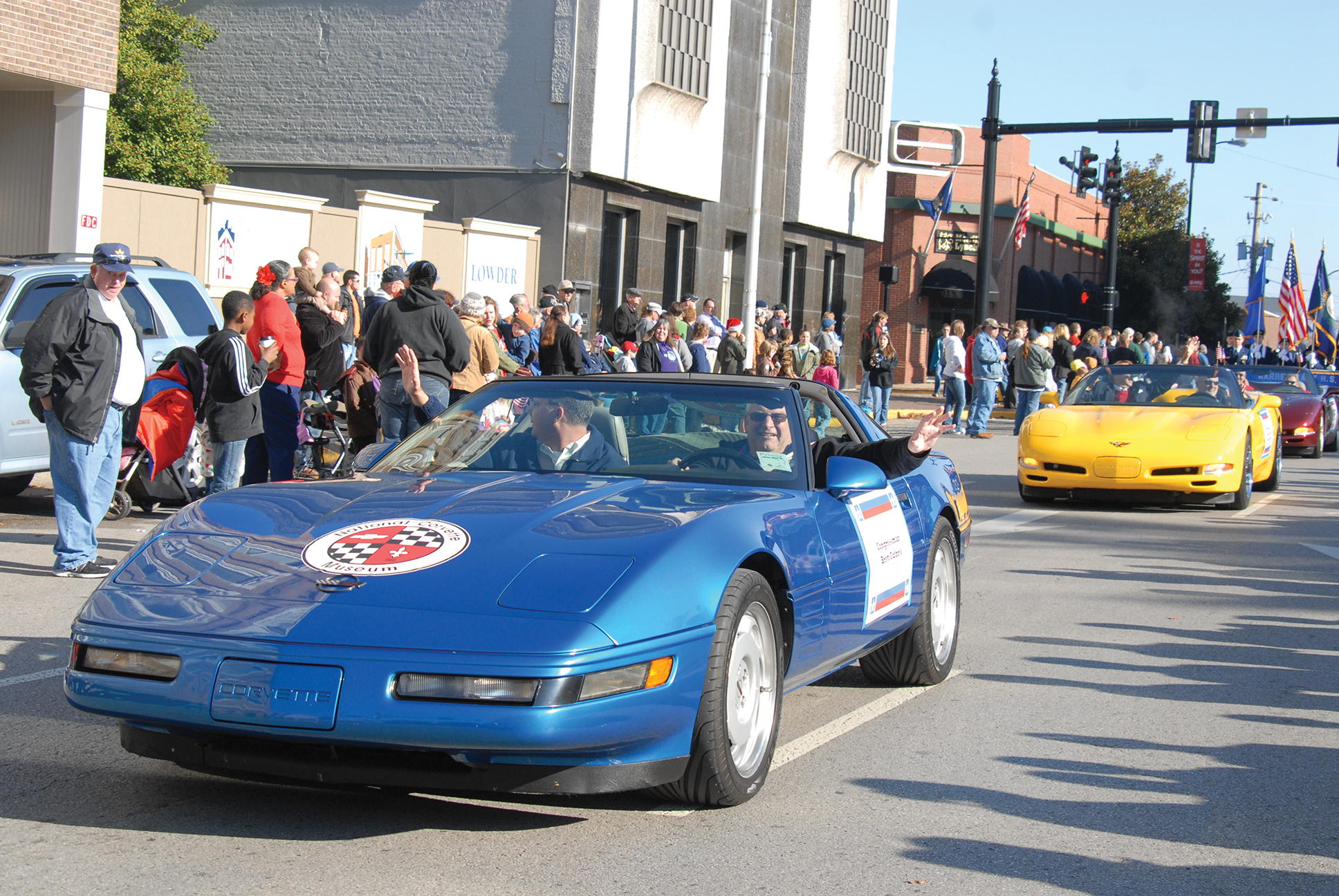
Wendell drives one of many Corvettes in the Bowling Green Veterans Day Parade.
